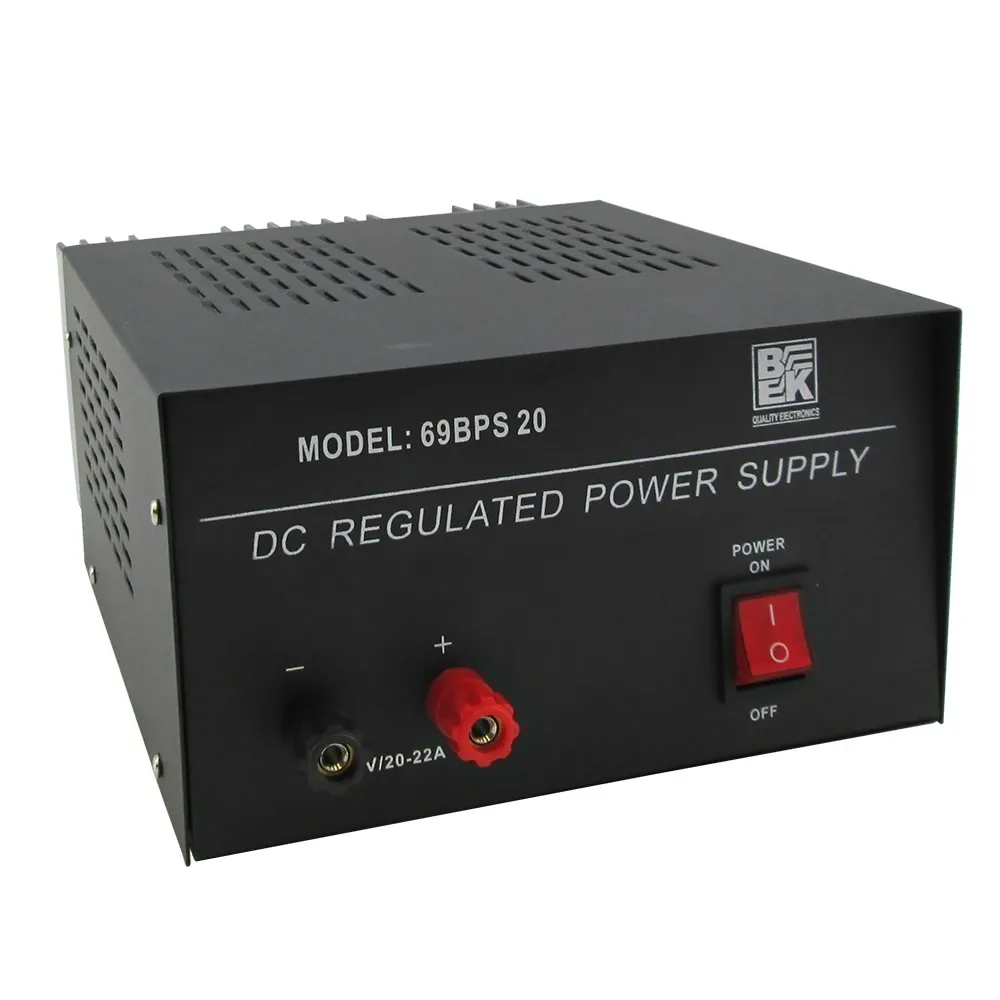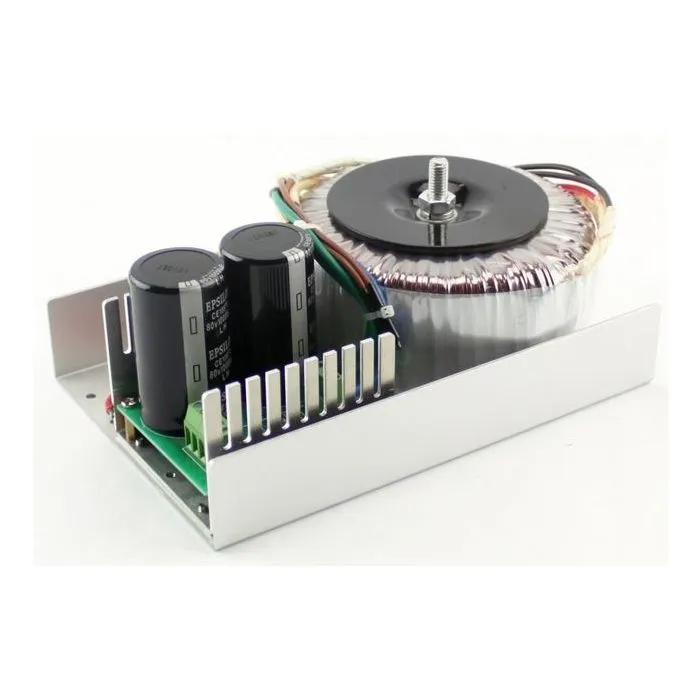Regulated vs Unregulated Power Supply: What's the difference?
Read our article which is about Regulated vs Unregulated Power Supply and find out which power supply you need to buy for your next project!

Regulated vs Unregulated Power Supply
Power supplies are critical to the operation of electronic devices and systems, supplying the necessary energy. Regulated vs Unregulated Power Supply are often debated when choosing the right power supply. Throughout this post, we will thoroughly cover the differences, advantages, and disadvantages of both types of power supplies. We will also discuss which is the best power supply for your needs, apart from discussing regulated and unregulated power supplies in detail.
Regulated vs Unregulated Power Supply
What is Regulated Power Supply?

Regulated Power Supply
In a regulated power supply, no matter how much voltage and current are supplied or how hot it is, the output voltage remains constant. Active circuits continuously monitor and adjust the output voltage of the regulated power supply in order to maintain the specified output voltage. Computers, telecommunication equipment, and industrial machines use regulated power supplies to maintain a steady voltage.
Despite changes in input voltage or load current, regulated power supplies provide stable output voltage. It can then be guaranteed that its performance and reliability will be maintained with a consistent and stable power source. An electronic device can be damaged by voltage fluctuations, overloads, and short circuits, which are also protected by a regulated power supply.
What is Unregulated Power Supply?

Unregulated Power Supply
Depending on input voltage, load current, and temperature, unregulated power supplies provide a variable output voltage. The output voltage of unregulated power supplies is not regulated by an active circuit, as with regulated power supplies. For small radios and toys, where a stable voltage is not necessary, unregulated power supplies are commonly used.
Unregulated power supplies have the advantage of being simple and relatively inexpensive. As a result, it is easier to design and manufacture since it does not require complex circuits. Although unregulated power supplies have many advantages, their main disadvantage is their inability to provide a constant output voltage regardless of changes in input voltage, load current, or temperature. The device may perform less reliably and perform less well as a result of this variation.
Regulated vs Unregulated Power Supply: Main difference
In the comparison of Regulated vs Unregulated Power supply, it's important to know all the differences between each of the power supply clearly before buying! Regulatory power supplies use voltage regulators, which are the most significant difference between them. An even voltage output is achieved by this component, as its name implies. Consistent voltage output is required for some electrical components. Unregulated power supplies can result in minor ripple voltages in other types of electric parts. An unregulated power supply will work if you need to power general-purpose electrical equipment, like LED lights. A power supply of this type cannot be used everywhere.
Power supplies with voltage regulators are more expensive. A regulated power supply may be too expensive for you if you don't even require power output. When you buy a large number of power supplies, the differences in cost become especially apparent. Be careful not to overspend on regulated power if your budget is tight. Saving money can be achieved by knowing the answer. Moreover, make sure to read the Regulated vs Unregulated Power SUpply Differences given below to get a more clear understanding of both of them.
Regulated Power Supply
Power Supply: Sensitive electronic devices can be supplied with regulated DC voltage using regulated power supplies.
Output Voltage: Regulated power supplies produce a constant output voltage regardless of how much current is drawn by the load. Current does not affect voltage, i.e. voltage does not depend on load current.
Cost: A regulated power supply's voltage regulation circuits are relatively expensive to manufacture. As a result, regulated power supplies tend to be more expensive than unregulated power supplies.
Usage: Regulated power supplies should always be used with electronic devices like computers, TVs, etc.
Unregulated Power Supply
Power Supply: Voltage regulation circuits are not present in unregulated power supplies, so any variation in input AC will affect output.
Output Voltage: As a result of the high internal resistance of unregulated power supplies, their output voltage always changes with output current.
Cost: In contrast to regulated power supplies, unregulated power supplies do not include voltage regulation and are therefore cheaper to produce.
Usage: DC motors and LED lamps can be used with unregulated power supplies because they are not sensitive to voltage fluctuations.
Regulated vs Unregulated Power Supply: Which Should You Choose?
How do you decide which is the best option? Your needs determine what you should do. Despite being less expensive, unregulated power supplies can only supply clean power up to the resolution of their input voltage. The use of clean power is imperative if you are powering sensitive electronics. If the voltage and current requirements of the device are closely matched, unregulated power supplies can still work smoothly.
One regulated power supply with multiple outputs is better than multiple supplies with single outputs if you need a power supply that provides multiple DC output voltages. In addition to being more common, regulated power supplies are also becoming easier to make at an affordable price. It may also be advisable to choose a regulated power supply if your device is sensitive, since this will give you more confidence that whatever voltage you choose will be delivered appropriately.
When to Choose Regulated and Unregulated Power Supply
Unregulated Power Supply
As long as the input and draw allow, unregulated power supplies have a steady output. Power supplies without regulated output must maintain the same voltage and current as the devices they power. Putting too much strain on the power supply could cause it to overheat if a mismatch occurs.
The device may draw too much current if the voltage supplied by the power supply does not match what it needs. Current and voltage produce power. The device's performance may be affected by voltage and current fluctuations despite steady power output. Voltage changes can damage electronic devices whose responses are sensitive.
You can find regulated power supplies in the same format as plug-in wall outlets, but most are unregulated. A minor voltage change won't damage lamps, LED lights, or DC motors. Unregulated power supplies are sufficient for powering electronic devices unless sensitive electronics are involved and the device draws a constant amount of power. This type of device does not have a regulator, so you can save money when you use it when necessary.
Regulated Power Supply
Unregulated power supplies are not available for some equipment. A computer, television, or other electronic device can be damaged by too much power. One advantage of regulated power supply is that these electronics require a smooth voltage. It is almost universal in today's electronics for regulated power supplies to be used.
You will still have to make other decisions after choosing regulated power supplies. The choice between linear and switching must also be made. Multiple applications are available for both. Power supplies with linear motors are cheaper, quieter, and more substantial than those with switching motors. In spite of the fact that switching is more expensive than linear, they are more efficient and have a higher potential output. Rather than switching power supplies, linear power supplies are better suited to specific applications.
Faqs
Question 1: What are the disadvantages of unregulated power supply?
Answer: The mains voltage and load current have a significant impact on unregulated power supplies. In this case, the output voltage is unstable. DC terminal voltage decreases with increasing load current.
Question 2: Unregulated power supplies: what is their efficiency?
Answer: Power supplies that are unregulated possess a simple design and are durable, with an average efficiency of about 60%. Electric motors and other electromechanical devices are typically powered by unregulated power supplies. For example, contactors are not required to provide fixed output voltage.
Question 3: Is a battery a regulated power supply?
Answer: With voltage regulators, the output voltage will be constant No matter what the load is or what the input voltage is (within limits) because feedback loops constantly adjust the voltage drop (linear) or duty cycle (switch-mode) during operation. There is no regulation of battery output voltage because it varies according to the state of charge and the load placed on it.
Question 4: Can AC voltage be regulated?
Answer: Unlike variable voltage regulators, ac voltage regulators produce regulated voltages out of variable voltage inputs. The output voltage remains constant no matter what is input and output. There are no changes to the input frequency or the sinusoidal waveform.
Final Verdict
In the article the main differences of Regulated vs Unregulated Power Supply is that Unregulated power supplies vary with changes in input voltage, load current, and temperature, whereas regulated power supplies provide a steady output voltage.
Low-power electronic devices use unregulated power supplies, while devices that need a stable voltage use regulated power supplies. Electronic devices require different types of power supplies depending on their specific requirements, both of which have their pros and cons. We can also custom-design the power supplies for your application if you cannot find what you need. The power solutions we provide for a wide variety of industries and applications are reliable, durable, and high-performing. Get in touch with us to find out how we can help.
Internal vs External Power Supplies: Pick the Right One for You!
The Power of the B58 Engine: Performance and Innovation
ATMega328P Microcontroller: A Powerful Microcontroller
Comparative Analysis of DC Transmission and AC Power
Tantalum vs Ceramic Capacitor: What's the Differences?
What is a Fusible Resistor? [Everything You Need to Know]
The Ultimate Guide to CR1220 Battery
What do Microminiature and Ultraminiature RF connectors entail?
Understanding Coupled Inductors: Operations and Practical Applications
Different Types of Mixers










